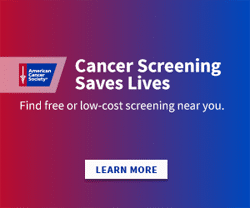
More Cancer Awareness Articles
An Update On CLL (Chronic Lymphocytic Leukemia)
Chronic Lymphocytic Leukemia (CLL) is the most common leukemia in the western world.
At diagnosis, 80% of the patients are in the asymptomatic phase (stage 0 CLL); in the peripheral blood excess of small lymphocytes is noted for at least three months. It usually affects people ages > 50, with two-thirds of patients being over the age of 60.
CLL is a heterogeneous disease where some patients never require therapy while others have a rapid progression and poorer prognosis requiring aggressive measures.
Laboratory parameters associated with prognosis are a high lymphocyte count >40000, a lymphocyte doubling time <12 months, an elevated B2 microglobulin, elevated STK levels, an elevated ANG2-level ,an increase in CD38 and ZAP 70 all correlate with increased proliferation and poor prognosis.
The cytogenetic abnormalities deletion 11q23, 17P12, and P53 are associated with poor prognosis, while Trisomy 12 and 13q14 have better prognosis. The cytogenetic abnormalities can help choose the candidates for bone marrow transplant.
Asymptomatic patients are observed. When patients develop fever, weight loss, night sweats, fatigue, cytopenia (anemia, thrombocytopenia), organomegaly (enlarged liver and spleen) and massive adenopathy then it is time to treat.
The treatment options are numerous nowadays, from single agents, to combination therapy. The first chemotherapy for CLL dates back 40 years, it is an oral agent called chlorambucil (leukeran), a very inexpensive alkilating agent surpassed in response rates by the currently more popular fludarabine, a purine analog used alone or in combination with other agents. Bendamustine is a combination alkilating agent and purine analog that recently gained popularity in USA and was FDA approved in 2008 although it has been used in Europe for over 30 years.
The monoclonal antibodies have emerged in the last 15 years targeting CD20 and CD52 (cell surface antigens over expressed in CLL) Rituxan (Rituximab) and Campath (Alemtuzmab). The major potential problem with the monoclonal antibodies is an allergic reaction otherwise I found this form of therapy to be extremely well tolerated, and it is my first choice as monotherapy in elderly patients.
Most recently a new monoclonal antibody was FDA approved for refractory disease called Arzerra (ofatumamab), effective in 2nd and 3rd line but very, very expensive.
Emerging therapies include lenalidomide, an immunomodulator agent, lumilixamab, a monoclonal antibody targeting CD23, GA101 a monoclonal antibody targeting CD20, a number of new agents targeting BCL2 as well as gene therapy, and several vaccines are currently in trials.
The goal of therapy is no longer just symptomatic relief but also improved disease free survival as well as overall survival.
Other Articles You May Find of Interest...
- Fighting Cancer for All: Why Diversity in Clinical Trials Matters
- Bill Johnson’s Lung Cancer Crusade: Fighting for a Radon-Free Life
- The Revolution of Robotic Surgery In Colorectal Procedures: Smaller Incisions, Faster Recovery
- Ovarian Cancer Prevention
- Wellness Technology From Nature, Light And Frequency
- Cancer: Improving the Odds
- Screening Tests For Oral Cancer

















